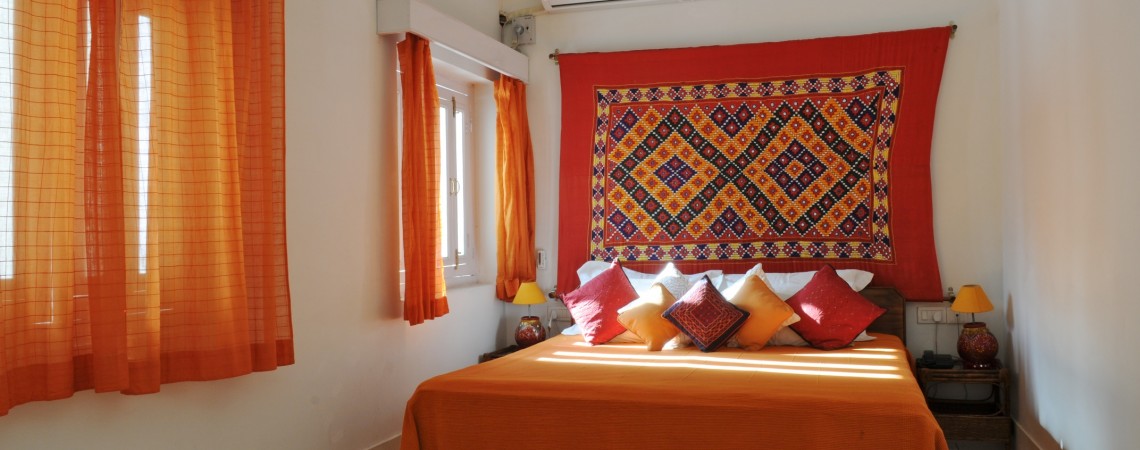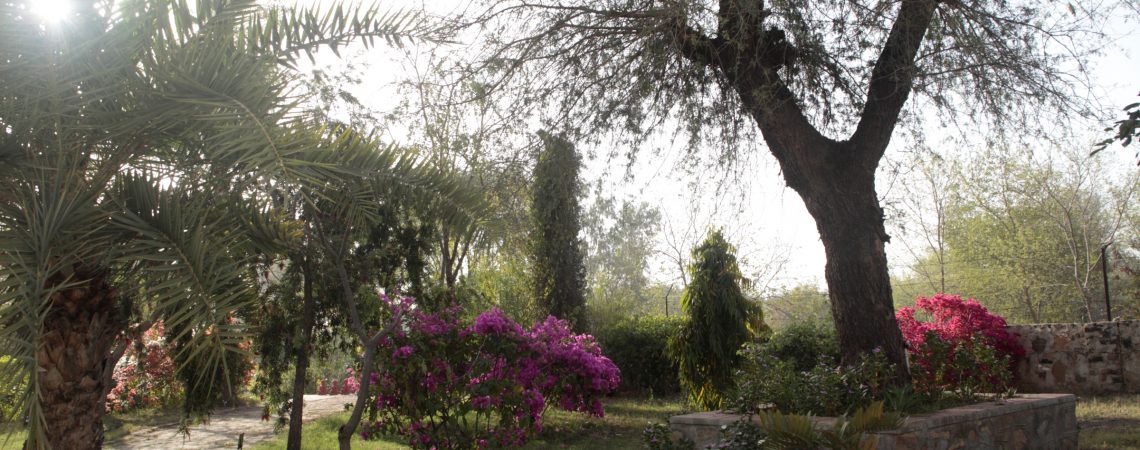Kesar
Kesar is the Hindi word for saffron, and this folky Rajasthani room reflects the sun-kissed desert – furnishings in flaming saffron and deep red with folk motifs. With a king-sized bed and large atrium, this room overlooks the garden and rising sun.
Kesar in Rajasthan has several connotations. It is saffron, the most delectable of spices…It is the colour of fragrant, sublime sandalwood…Kesar reflects the sun and golden sand dunes of the region…It symbolizes the aspiration of the people for auspiciousness, plenty and prosperity…It is one of the most favourite colours of choice, singly or in combination with hot pink and bright red, for women’s veils and men’s turbans… Above all, Kesar is the colour of the native Rajasthani’s love and longing for her/his lover… embodied as the Kesariya…
In this arid desert region of vast distances, men of all communities – other than agriculturists – have traditionally, for thousands of years, been compelled to migrate far from home in search of livelihood or fortune… whether as merchants, warriors, herdsmen or artisans. Given the tradition of early betrothal and marriage, the experience of loneliness and separation came early in the lives of men and women here (Rajasthan’s notorious institution of child marriage, and the resulting maternal and infant death statistics, continue to reflect some of the negative outcomes of this social practice).
Marriages in Rajasthan have always been based on clan exogamy. And since clans were concentrated in specific regions, marriages generally took place between families located almost 1000 km. apart. Teenaged daughters left home and parents after marriage, to live in distant lands with strange families. A young woman’s emotional sustainability thus depended on her skill in crafting a mutually supportive relationship with the people in her new and complex social environment. The only person in this environment with whom she could share a deep intimacy was her husband. In such a situation, when couples were separated for extended periods due to male migration, they lived in a permanent state of longing for the beloved…a loneliness most poignantly felt by women, for obvious reasons.
All of this is embodied in the popular word-name for lover – Kesariya. Kesar, thus is, both, the colour of and metaphor for love and longing for the beloved…It is separation from and union with…the beloved. It is also a popular name in the region for both men (Kesar Singh) and women (Kesar Kanwar).












